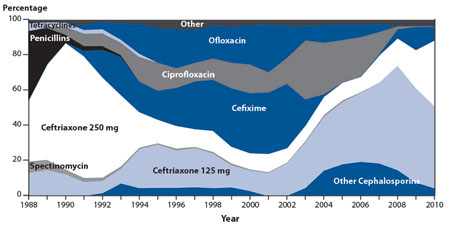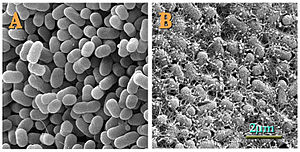 James Hamblin, MD, at The Atlantic, here, writes,
James Hamblin, MD, at The Atlantic, here, writes,
The list of effective antibiotics has been dwindling as the bacteria became resistant, and now it’s down to one. Five years ago, the CDC said fluoroquinolones were no longer effective, but oral cephalosporins were still a common/easy treatment. Now injected ceftriaxone is the only recommended effective drug we have left. And it has to be given along with either azithromycin or doxycycline.
Dr. Hamblin and The Atlantic also reproduced the graphic, above, tracing the treatments in use from 1988 to 2010. Penicillins stopped being effective in the early 1990’s. While this news is disturbing, it also illustrates how evolution works. A small percentage survive because of natural resistance. They reproduce. Their offspring have the resistant genes. Whether it’s grey moths that are obvious on trees in pristine environments and difficult to see on trees where the smog coloured the bark, pests in a farm field, or infectious bacteria, the principle is the same.
Looking from a whole systems perspective, maybe we need to develop medications that stimulate the human immune response, rather than medications that try to kill the bacteria. Continue reading

